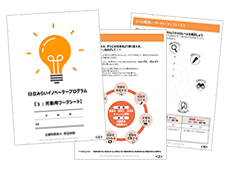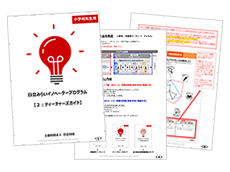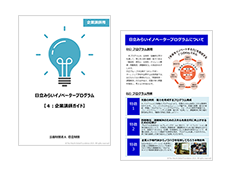Human Development
Hitachi Group employees offer on-site lectures at schools to provide project-based learning to find and solve problems and nurture the innovators of tomorrow.
Human Development
Hitachi Group employees offer on-site lectures at schools to provide project-based learning to find and solve problems and nurture the innovators of tomorrow.
The wavering of the foundations of manufacturing and innovation has become deeply concerning with the rise in a shift away from science and logic in recent years, and the strategic training of human resources in science and technology that will carry the weight of Japan into the next generation has become an issue, with the Ministry of Education, Culture, Sports, Science and Technology announcing their Strategy for Developing Human Resources in Science and Technology in March 2015.
As the skills needed for human resources in science and technology are developed in stages, it is important to work on these skills from primary and junior high schools.
Against this background, we developed the Hitachi Future Innovator Program as part of the Science & Technology Human Resource Development Support Program, which utilizes employees of the Hitachi Group from a mid- to long-term perspective and is a central part of human development, a focus area for The Hitachi Global Foundation.
This program defines the talents (curiosity, independence, challenging sprits, and creativity) and skills (problem finding and solving ability) needed for human resources in science and technology as "abilities to innovate the future" and aims to develop these skills.
To develop these skills, we established seven Key Skills: "Find a problem," "Make a hypothesis," "Plan a solution," "Collect data," "Test a hypothesis," "Analyze and evaluate," and "Create."
Children will gain the skills to innovate the future through repetitive skill training as they work in groups on issues that they selected themselves, based on the theme of creating the ideal school. In the five years since 2016, the program has been held in 30 classes at 14 schools, and 1,069 school children have participated.

The program consists of Phase 1, the skills training and Phase 2, the project-based learning (PBL).
(on -site lesson (1) Motivation - on site lesson(4) Final Presentation as mentioned the above, total four on-site lessons are provided. Hitachi Group employees also participate in all four on-site lessons as corporate lecturers and support the children's learning by providing advice on their ideas.
Children take the trainings to develop the skills needed to reform a school better as a leader.
Children work together in groups to tackle issues they have set themselves under the theme of "creating an ideal school" by making use of the skills they obtained in phase 1.
▼For Students

▼For Teachers

▼For Lecturers
